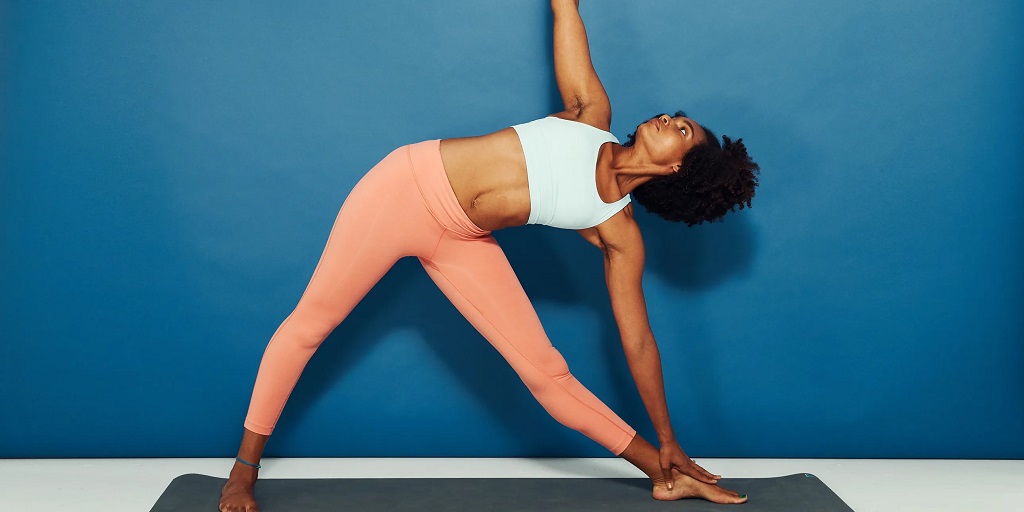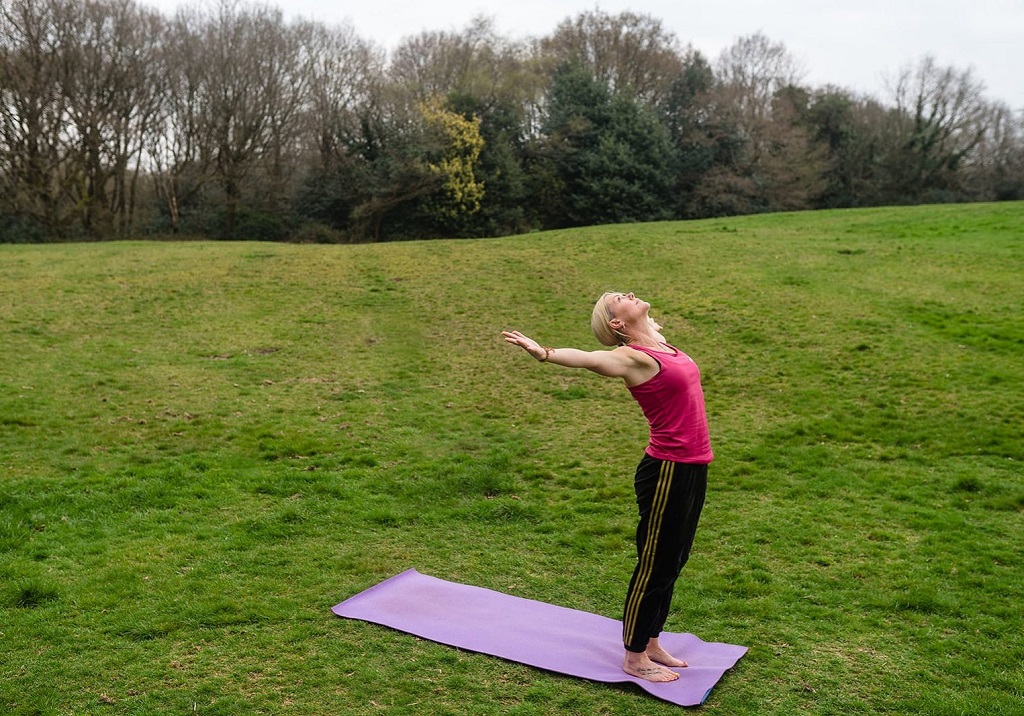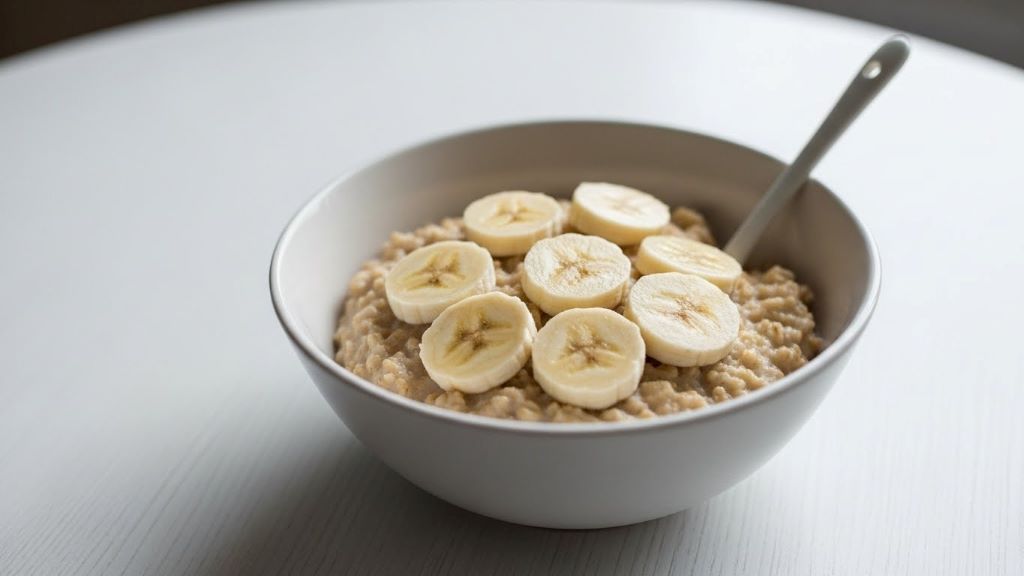Yoga, with its emphasis on mindful movement and breathwork, is a practice that offers a wealth of benefits for both body and mind. It can improve flexibility, strength, balance, and overall well-being. However, for beginners, navigating the vast world of yoga poses can feel overwhelming. This guide delves into the essential yoga poses for beginners, providing a foundation for a safe and rewarding yoga journey.
Contents
Benefits of Mastering Basic Yoga Poses:
Building a strong foundation with essential yoga poses offers numerous advantages for beginners:
- Improved Body Awareness: Focusing on proper alignment in basic poses enhances your understanding of your body’s capabilities and limitations.
- Enhanced Flexibility and Strength: Regular practice of these foundational poses gently increases flexibility and builds core strength, preparing you for more advanced postures.
- Increased Confidence: Mastering basic poses fosters a sense of accomplishment and boosts confidence, motivating you to explore further.
- Reduced Risk of Injury: Proper form and alignment minimize the risk of injury, ensuring a safe and sustainable yoga practice.
Essential Yoga Poses for Beginners:
Now, let’s explore some essential yoga poses for beginners that provide a well-rounded foundation:
-
Mountain Pose (Tadasana):
This seemingly simple pose is the foundation for all standing poses. It teaches proper posture, body alignment, and breathwork. Stand tall with feet hip-width apart, engage your core, and lengthen your spine.
-
Downward-Facing Dog (Adho Mukha Svanasana):
This pose strengthens your arms, legs, and core while stretching your hamstrings and calves. Start on all fours, push your hips back and up, straightening your legs as much as comfortable, and gaze between your legs.
-
Warrior II Pose (Virabhadrasana II):
This warrior pose builds leg strength and improves balance. Step one leg back with a bent knee, keeping the front leg strong and the foot flat. Square your hips forward, reach your arms overhead, and gaze over your front hand.
-
Triangle Pose (Trikonasana):
This pose opens the hips and stretches the sides of the body. Step one leg back, rotate your front foot forward, and reach your torso over the front leg, extending your other arm towards the ceiling.
-
Child’s Pose (Balasana):
The child’s pose provides a resting position for relaxation and gentle back stretch. Sit back on your heels, rest your forehead on the mat, and extend your arms alongside your body.
-
Bridge Pose (Setu Bandhasana):
This pose strengthens your hamstrings, glutes, and core. Lie on your back with your knees bent and feet flat on the floor. Lift your hips off the ground, keeping your shoulders grounded, and clasp your hands under your body.
-
Plank Pose (Chaturanga Dandasana):
Plank strengthens your core, shoulders, and arms. Start in a push-up position with your elbows bent at a 90-degree angle. Keep your core engaged, and back flat, and form a straight line from head to heels.
-
Cat-Cow Pose (Marjaryasana – Bitilasana):
This dynamic duo improves spinal mobility and teaches breathwork coordination. On all fours, arch your back as you inhale (cow pose) and round your back as you exhale (cat pose).
Beyond the Poses: Essential Yoga Techniques for Beginners
While mastering the poses is important, focusing on these additional techniques enhances your yoga practice:
- Breathwork (Pranayama): Pay attention to your breath throughout your practice. Inhale deeply through your nose and exhale slowly through your mouth.
- Mindfulness: Focus on the present moment and the sensations in your body. Let go of distractions and worries.
- Alignment: Maintaining proper alignment in each pose is crucial for safety and effectiveness. Don’t push yourself beyond your comfortable limits.
- Modifications: Don’t hesitate to modify poses to suit your body’s limitations. There are variations for most poses to accommodate different flexibility levels.
- Listen to Your Body: Yoga is not about forcing yourself into uncomfortable positions. Take breaks when needed and respect your body’s signals.
Building a Beginner Yoga Sequence:
Once you feel comfortable with these essential poses, you can create a simple yoga sequence to practice regularly:
- Warm-up: Start with gentle movements like neck rolls, shoulder rolls, and arm circles to prepare your body for deeper stretches.
- Sun Salutations (Surya Namaskar): A foundational yoga sequence that incorporates several essential poses and promotes a flow of movement with breath.
- Standing Poses: Practice various standing poses like Mountain Pose, Warrior II, Triangle Pose, etc.
- Balancing Poses: Introduce gentle balancing poses like Tree Pose (Vrksasana) or Warrior III (Virabhadrasana III) to improve balance and focus.
- Hip-Openers: Include poses like Downward-Facing Dog, Lizard Pose (Utthanasana), or Pigeon Pose (Eka Pada Rajakapotasana) to gently stretch and open your hips.
- Core Strengthening Poses: Practice Plank Pose, Boat Pose (Navasana), or Bird-Dog Pose (Virabhadrasana Balancing Variation) to build core strength and stability.
- Twists: Spinal twists like Seated Spinal Twist (Ardha Matsyendrasana) or Half Lord of the Fishes Pose (Ardha Matsyendrasana) can improve spinal mobility and detoxification.
- Forward Bends: Forward bends like Seated Forward Bend (Paschimottanasana) or Head-to-Knee Forward Bend (Janu Sirsasana) stretch your hamstrings and promote relaxation.
- Restorative Poses: End your practice with a relaxing pose like the Child’s Pose or Corpse Pose (Savasana) to allow your body to integrate the benefits of your practice.
Remember: This is just a sample sequence. You can adjust it based on your preferences, time constraints, and fitness level. There are many online resources and yoga classes specifically designed for beginners that can guide you in creating safe and effective sequences.
Yoga Beyond the Mat:
The benefits of yoga extend beyond the physical practice. The emphasis on mindfulness and breathwork can translate into other aspects of your life:
- Stress Reduction: Yoga can help manage stress by promoting relaxation and calming the mind.
- Improved Sleep: Regular yoga practice can improve sleep quality, leading to increased energy and focus.
- Enhanced Body Awareness: Yoga cultivates a deeper connection with your body, allowing you to listen to its needs and respond accordingly.
- Increased Self-Confidence: Mastering poses and experiencing the positive effects of yoga can boost your confidence and self-esteem.
Embrace the Journey:
Yoga is a lifelong journey, not a destination. Embrace the process of learning and exploring new poses. Be patient with yourself, celebrate your progress, and enjoy the journey of connecting your body and mind. As your practice evolves, you can gradually incorporate more challenging poses and explore different yoga styles.
Additional Tips:
- Find a Yoga Style and Teacher That Resonates with You: There are various yoga styles, each with its emphasis and approach. Try different styles to find one that resonates with you and consider attending classes with a qualified yoga teacher who can provide guidance and personalized feedback.
- Invest in a Quality Yoga Mat: A comfortable yoga mat provides support and stability during your practice.
- Practice Regularly: Consistency is key to reaping the benefits of yoga. Aim for a few short practices throughout the week instead of infrequent long sessions.
- Most Importantly, Have Fun! Yoga should be an enjoyable experience. Don’t get caught up in achieving perfect postures. Focus on enjoying the movement and connecting with your breath.
Related: 5 Yoga Positions that Will Increase Your Flexibility
By incorporating these essential yoga poses, techniques, and tips into your practice, you’ll establish a strong foundation for a rewarding yoga journey that enhances your physical and mental well-being.





